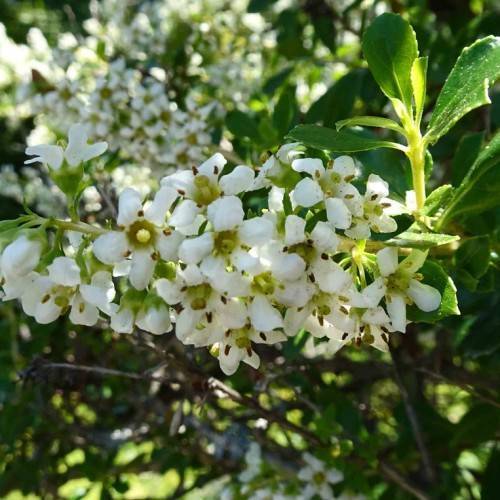
escallonia
Escallonia rigida
Cycle:
Perennial
Watering:
Average
Hardiness Zone:
7 - 9
Flowers:
Flowers
Sun:
Full sun,part shade
Leaf:
Yes
Growth Rate:
Low
Maintenance:
Low
Drought Tolerant:
Yes
Salt Tolerant:
Yes
Care Level:
Medium
watering
Escallonia rigida prefers moist, well-drained soil, so it is important to water regularly, ensuring the soil is evenly moist but not soggy. During the growing season, which is from spring to autumn, the plant should be watered on a weekly basis, allowing the soil to dry out slightly between waterings. During the winter months, water only occasionally. It's important to avoid overwatering to prevent root rot, which is a common problem with Escallonia rigida. Lastly, make sure the plant is located in a spot that receives at least 6 hours of direct sunlight each day.
sunlight
Escallonia rigida is a species of flowering plant native to Chile and Argentina. Escallonia rigida requires at least 6 hours of sunlight per day in order to thrive. In its native climate, Escallonia rigida prefers full sun in the morning and some protection from the hot afternoon sun. During the growing season between spring and fall, light levels should remain consistent and higher than in winter. In winter, lower light levels are acceptable for Escallonia rigida but the frequency of sunlight should remain consistent.
pruning
Escallonia rigida needs occasional pruning to control its size and shape. Prune it in late spring or early summer, after it has finished flowering. Start pruning by removing dead, damaged, diseased or overcrowded branches. Cut away any branches that appear diseased or are growing in an unsustainable manner such as rubbing against other branches. Make sure you use sharp, clean pruning shears. Cut back each branch to a healthy junction (where 2 or 3 branches meet). Make sure to shave off the lower branches to encourage the growth of vigorous young branches up top. After pruning, you can fertilize to encourage new growth.
